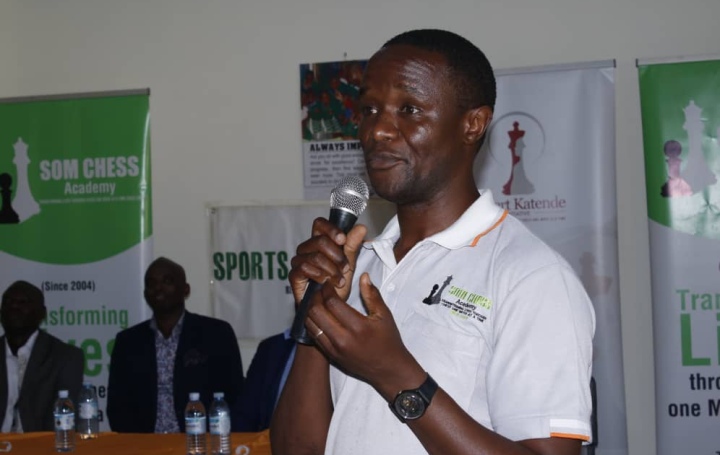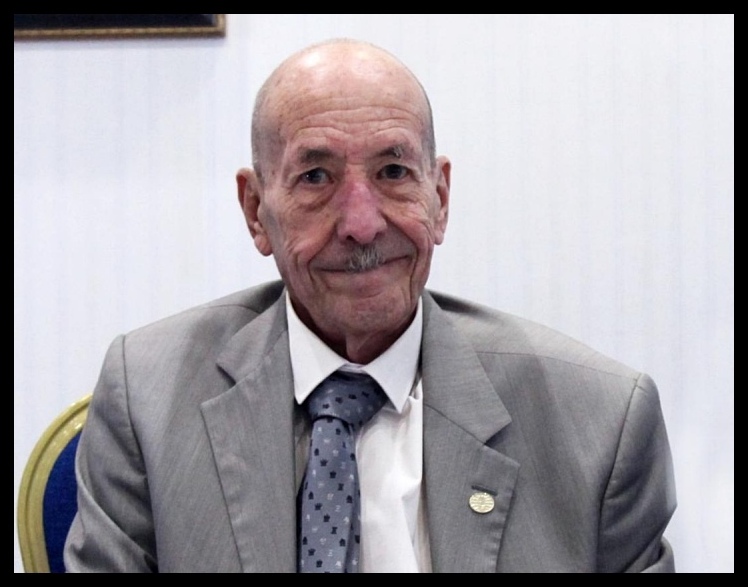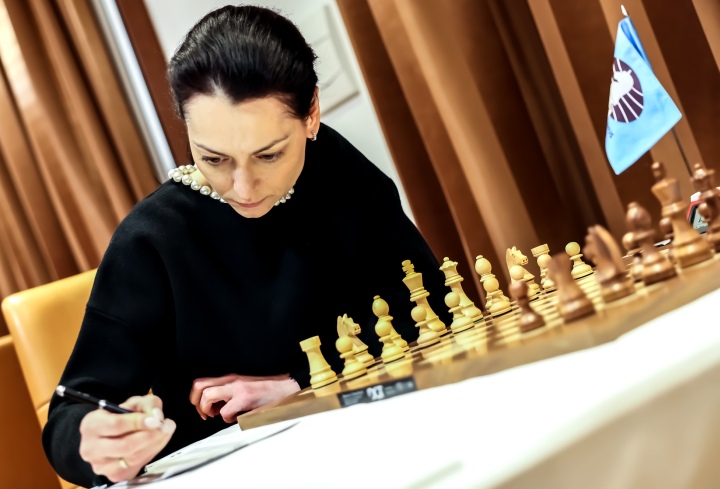Robert Katende: Have a heart that loves people no matter who they are

SOM Chess Academy is not your standard chess school. Its founder, Robert Katende, managed to bring chess into the lives of the children of Uganda’s slums. Starting with a single chessboard and a desire to help, he managed to uplift the lives of thousands of disadvantaged children. Katende is probably best known for being the man who taught Phiona Mutesi, Uganda’s Women Candidate Master, whose story was turned into a Disney movie, “The Queen of Katwe”, released in 2016. Erick Takawira, Councillor of the FIDE Social Commission, interviewed Robert Katende to learn more about bringing chess to slums and using it to impact people’s lives for the better. – Robert, where did your journey start? What inspired you? There must be something which kicked in you to say, I want to do this kind of work. – The most intriguing factor is that I just wanted to figure out how I could contribute to the well-being of the children who were struggling in the slum life, having lived it myself. I was asking myself how it could be a solution for some of the learners who were craving and struggling to see how they could make it in life. I did not have a full idea that it would ever be as it has turned out to be anyway. – Is this where SOM comes in, or were you doing it without any organization linked to it? – I was using soccer to reach out to the children in the community through Sports Outreach but realized some of them were not interested, and the majority of the girls, soccer wasn’t their thing. My heart was like: how can I reach out to these kids? And I gave birth to the idea of chess. I knew how to play chess and had a chess set, so I decided to introduce them to the game and make it a platform where I engaged with them. – Where are you located? – We have a center where I am right now in Kampala. This is where we hold all our events, and it has been ten years since we acquired this space. We call this SOM Chess Academy Arena on Mityana Road. We are also developing another small center in Katwe where the program started from. – Who can be part of SOM? – Anyone can be part of our programs. Although our heart is reaching out to the less privileged individuals, we are open to everyone who embraces the vision. To be a member of SOM, every child is required to register and subscribe by paying Ugx 10,000 (about $3) a year. It gives access to the teaching program, the feeding program, Vocational skills study and education support opportunities. – What are the lessons you could say you have learnt in this journey? – When I started bringing chess into the less privileged communities, especially when we came to Katwe, people did not understand what chess was all about. It was very challenging allowing children to be part of it as most thought it was gambling. Space was a challenge, so we initially had to conduct the program from a former dumping site. The children themselves wouldn’t embrace it, but some would hang around because of the feeding program. Taking kids to a tournament positively struck people’s minds that it was bigger than they first thought. – What challenges could you say you are facing? Where do you look for hope? – The biggest challenge right now is funding because the needs are many to realize and sustain our vision. It is really encompassing in terms of financial and human resources. We look forward to partners willing to work with us. We are now facing a challenge, especially after COVID, because most of our partners fell off after that. – Do you have any strategic partnerships? Are there any organizations supporting the work you do? – We don’t have many organizations that have partnerships with us; most of them are more like one-time grant people. Sports Outreach is our key supporter and doubles as our mother organization, then the Robert Katende Initiative. The rest are one-time supporters such as Go Campaign, Issroff Foundation, Rosie J Coe foundation, Bilu Uganda, World Vision, SBC, FIDE and UCF. Then we have single families and individuals, the Robert Katende Initiative, registered in the USA, which was founded in 2017 with the sole purpose of supporting the two learners, Benjamin Mukumbya and Phiona Mutesi, that had gotten into the US Colleges on a tuition scholarship. We need funding and thus call for partners to invest in this vision so that we can sustain what we are doing and also be able to scale the impact in other communities across Africa. – Are there any other projects you have undertaken to educate the children and make their lives better? – Chess is more of a teaching tool we use to identify the potential of the learners. We guide and direct them to their destiny. We have an education support program where over a span of 19 years, we have close to 40 graduates who have gotten through SOM programs. We have engineers, doctors, accountants etc. We have vocational skills and computer training programs. The Centre has a computer lab, and we plan to start coding in 2024. – What would you say is the social impact of chess? – Chess bridges the social gap created economically and levels the ground. It brings people from all spheres of life on the board to reason together and interact. Chess bridges the two ends together so that irrespective of gender, age, economic status, or educational background, people get a platform to engage and learn from each other. – What is your hope for SOM? What do the programs need to grow? – Our theme is to restore hope and transform lives. We need to have connectivity and good networking with supporters, that connectedness is going to break the vicious cycle
Jorge Vega Fernandez (1935-2023)

FIDE is deeply saddened to hear of the passing of Jorge Vega Fernandez. Honorary Member of FIDE, he was a key figure for chess in Americas, being the President of Confederation of Chess for Americas (CCA) for nearly 20 years. Jorge Vega was born in Cuba in 1935 and lived a long and eventful life. He took part in the Cuban Revolution, which overthrew the Baptista regime in 1959. Legendary Che Guevara ordered him to carry a pocket chess set so that they could play chess between battles with government troops. The hero of Cuban revolution was the best man at Jorge’s wedding. Jorge Vega was a Cuban delegate since 1977, Zonal President since 1974, Central committee member since 1974 and FIDE Bureau member since 1979. Because of his international links through chess, he was imprisoned by the Cuban authorities and spent a long time in solitary confinement. After strong diplomatic pressure from the Canadian Government organized by John Prentice, Jorge was released and allowed to leave Cuba. He then moved to Mexico. In 2002, he was elected President of Confederacion de Adjedres para America (CCA) and held this position for the next 20 years. He unified what had been a very divided body until then, and it became a very influential part of the FIDE family. His friends in chess will never forget him and cherish plenty of sweet moments. Nigel Freeman, President of the Bermuda Chess Federation and former FIDE Executive Director and FIDE Treasurer, shared one of them. When Jorge was 80, he had a medical checkup, and the doctors asked him how he managed to have the constitution of someone more than 20 years younger, and he replied: “I drink a lot, I smoke a lot and never eat green vegetables.” FIDE extends its sincere condolences to Jorge Vega Fernandez family, friends, and loved ones. Photo: Anastasia Karlovich
WGP Munich: Kosteniuk extends her lead

By IM Michael Rahal (Munich, Germany) Alexandra Kosteniuk increased her lead this afternoon in the Munich leg of the 2023 Women’s Grand Prix after a fine performance against Anna Muzychuk. With 6.5/8, and with only three games to go, she is the clear favourite to take home the trophy. “My husband – GM Pavel Tregubov – will be happy today. When I came back to the room in the last four games, he was always asking whether I had some pills to calm down his nerves!” were Kosteniuk’s first words in her post-game interview. With her impressive win today, Humpy Koneru secures second place and, with three rounds to go, seems like the only player with a chance to catch Kosteniuk. However, Humpy keeps an open mind: “I have had a lot of disappointing games like yesterday against Zhu Jiner when I missed a completely winning position. I don’t want to think much about the standings and just focus on the game.” Moritz Opfergeld, CEO of the Munich Residential Group, made the ceremonial first move for Alina Kashlinskaya in her game against Koneru Humpy today. However, Alina replaced his chosen 1.d4 with 1.e4! GM Harika, Dronavalli vs GM Abdumalik, Zhansaya (0.5-0.5) The first game to finish this afternoon ended in an excellent result for Zhansaya Abdumalik. After a shaky start, the top Kazakhstan female player is slowly but surely getting back into the event, and today she drew effortlessly with Black against Harika. In the solid Vienna variation of the Queen’s Gambit Declined, they repeated the first fifteen moves of a well-known 2011 game between Levon Aronian and Vishy Anand, in which White sacrifices a pawn for the initiative. Aronian won that game, but instead of playing for the attack, Harika preferred to get the pawn back and transition to a totally equal ending. A draw was agreed upon just after they reached move thirty. GM Tan, Zhongyi vs GM Muzychuk, Mariya (0.5-0.5) For this game, the former Women’s World Champion prepared an interesting pawn sacrifice in the English Opening. In exchange she got a bishop pair and certain initiative on the c-file. Displaying excellent positional touch, Muzychuk decided to return the pawn and exchange the rest of the pieces, agreeing to a draw on the move thirty-three. IM Kashlinskaya, Alina vs GM Koneru, Humpy (0-1) A very solid game. Already in the opening, Kashlinskaya went for piece trades, and soon the queens were also off the board. It’s hard to say if the previous score between the two (4 wins and 1 draw for Humpy) influenced Kashlinskaya’s decision to play it safe. Soon only one bishop a piece was left on the board, with Humpy pressing for the win thanks to a very slightly favourable pawn structure. Kashlinskaya defended very well until time trouble: fate struck on move thirty-six. It’s impossible to confirm that Kashlinskaya would have drawn for sure with a move such as 36. Kd2 but 36.h4, allowing the Black king to penetrate via the d4 square, is a clear blunder that left her with no chance at all to save the game. “The endgame is very comfortable for me: it’s White that has to defend. Of course, h4 is a blunder; probably she should have tried to block with her king on d1 and c2,” was Humpy’s analysis in her post-game interview. WGM Wagner, Dinara vs WGM Zhu, Jiner (0-1) Playing with White in the Nimzo-Indian main line Wagner obtained the bishop pair, but Zhu Jiner’s pieces remained very active. The position remained equal until move twenty-three when Wagner unexpectedly blundered with 23.Qc2? allowing a very nice tactical shot. Zhu Jiner isn’t one to miss such an opportunity, and after a few-minute-thought sacrificed her knight with 23…Rxd1 24.Rxd1 Nxf3! winning material. After a forced line that both players calculated correctly, an opposite-coloured bishop ending was reached. According to the engine analysis, Wagner had serious drawing chances but only by capturing the pawn on h5 on move thirty-five. Instead, low on time, she went for the a7-pawn, only to realise that her bishop would be trapped. Zhu Jiner didn’t give her another chance and wrapped up the game with great technique. GM Paehtz, Elisabeth vs GM Dzagnidze, Nana (1-0) According to my database, Paehtz and Dzagnidze have played together on 40 occasions, with the Georgian GM outscoring her opponent by 17 wins to 8 with 15 draws. In today’s game, Paehtz went all-out for the win with a very aggressive approach against Dzagnidze’s Sicilian Najdorf. The key moment of the game was move twenty-three. Dzagnidze initiated a sequence of captures with 23…Rxc3, followed by a positional queen sacrifice. With fifteen moves to go and less than ten minutes each on the clock, it was hard to understand even from the outside if Paehtz’s queen was stronger than Dzagnidze’s combined rook plus knight plus an extra pawn. Dzagnidze’s 32…Nh7 was the decisive mistake, allowing Paehtz to win more material and dominate her opponent in a queen plus pawns vs rook plus pawns endgame. GM Kosteniuk, Alexandra vs GM Muzychuk, Anna (1-0) Spending more than an hour of thinking time on your first ten moves at this level is generally a mistake. Even though Muzychuk managed to equalise going out of the opening, she sacrificed a pawn to exchange queens to fight for a draw in a slightly worse ending. Several grandmasters have been able to hold the position to a draw, but it’s not an easy task. Muzychuk defended with great precision for many moves, but approaching time trouble, Kosteniuk picked up the pace with the idea 38.g5 – 39.g6 and especially 20.a5! which could prove useful in some king endings. It’s hard to pinpoint the final blunder – possibly the plan initiated with 46…Rh8 – but in any case, Kosteniuk demonstrated excellent endgame technique to bring home the point. “Time management was a key factor in today’s game. In the first time trouble, she definitely did something wrong; she gave me chances to improve my position on the kingside,” Kosteniuk explained

